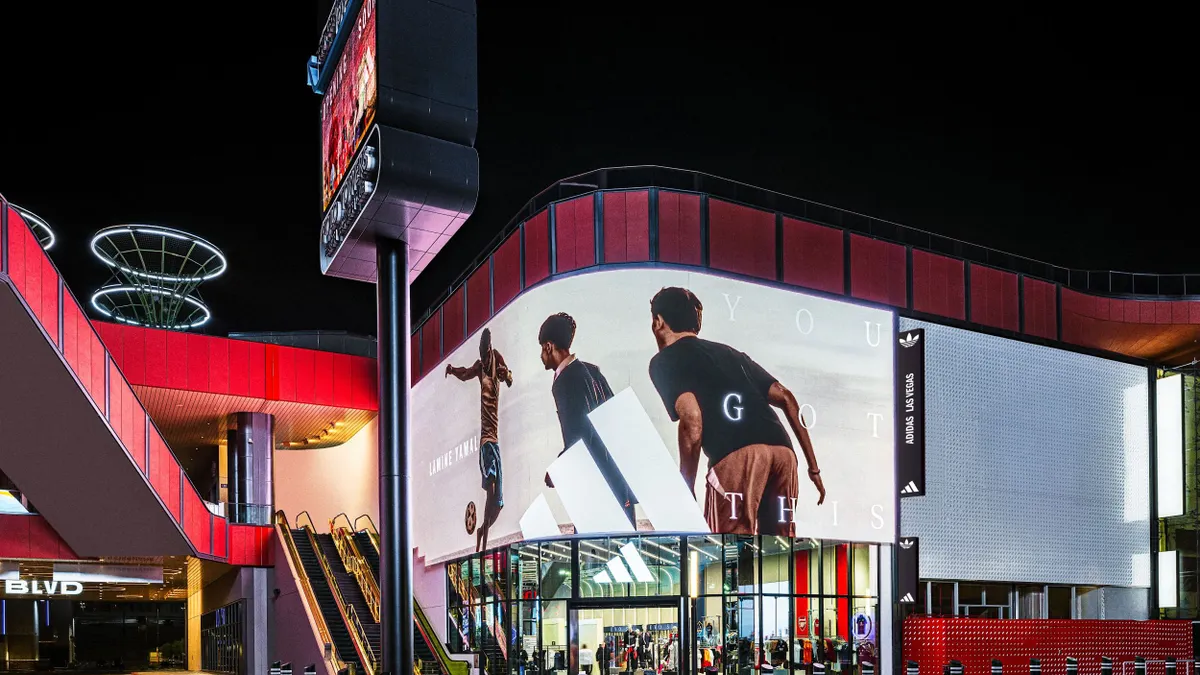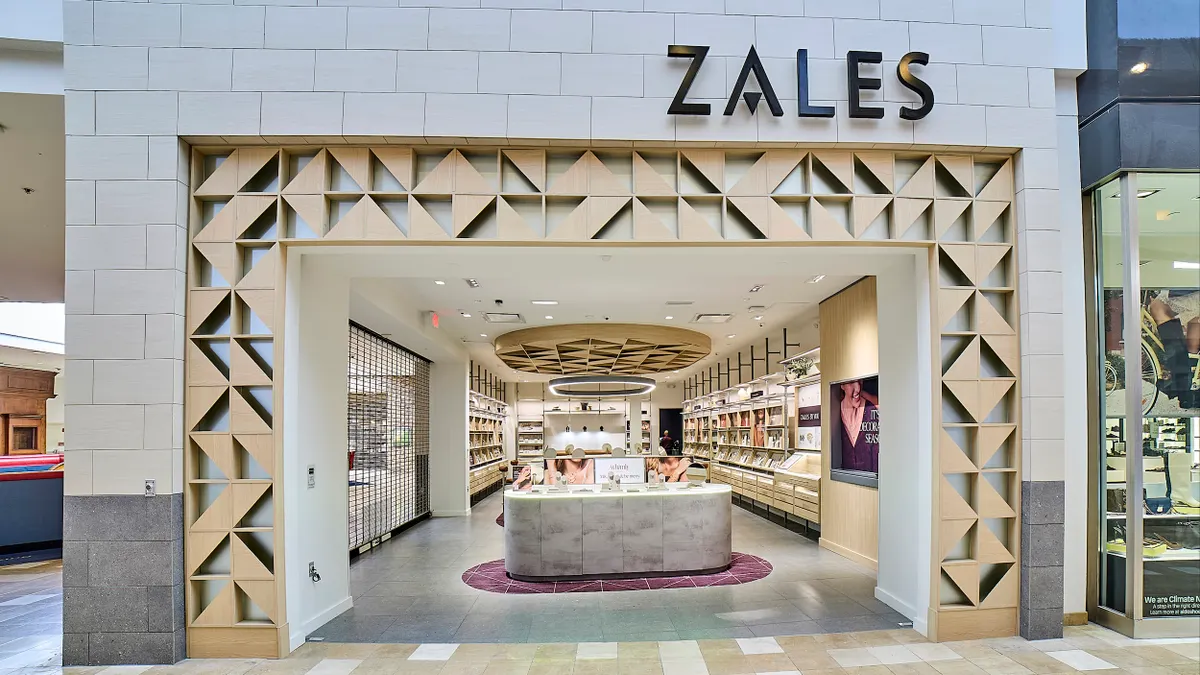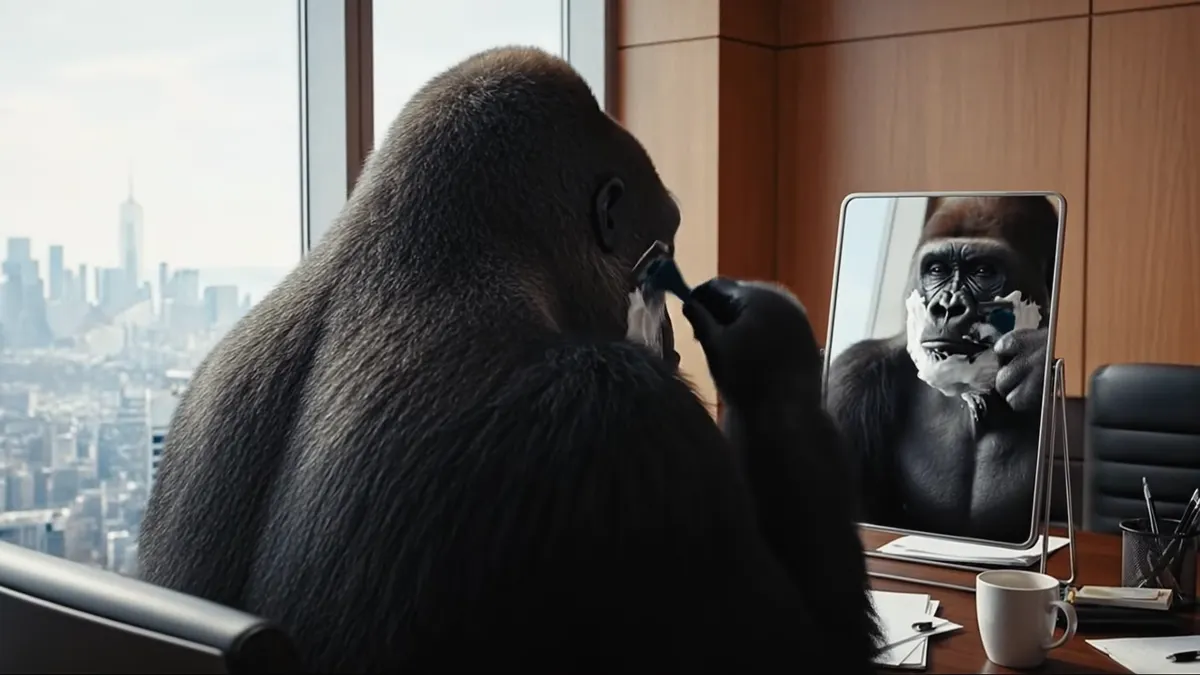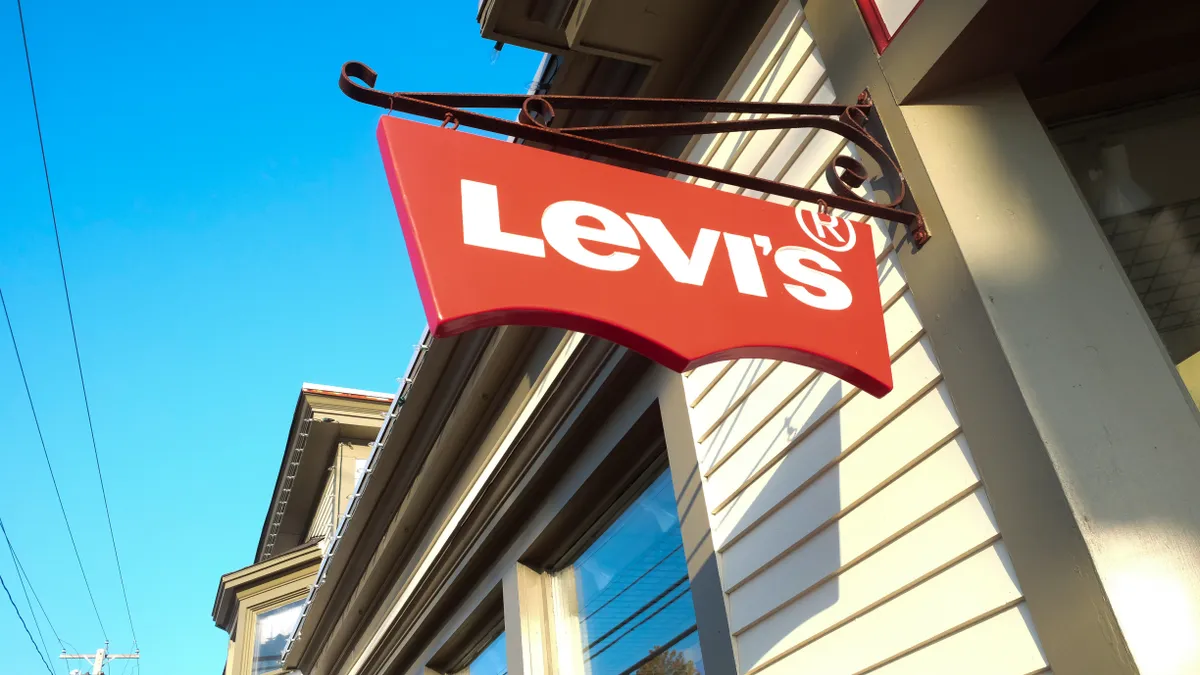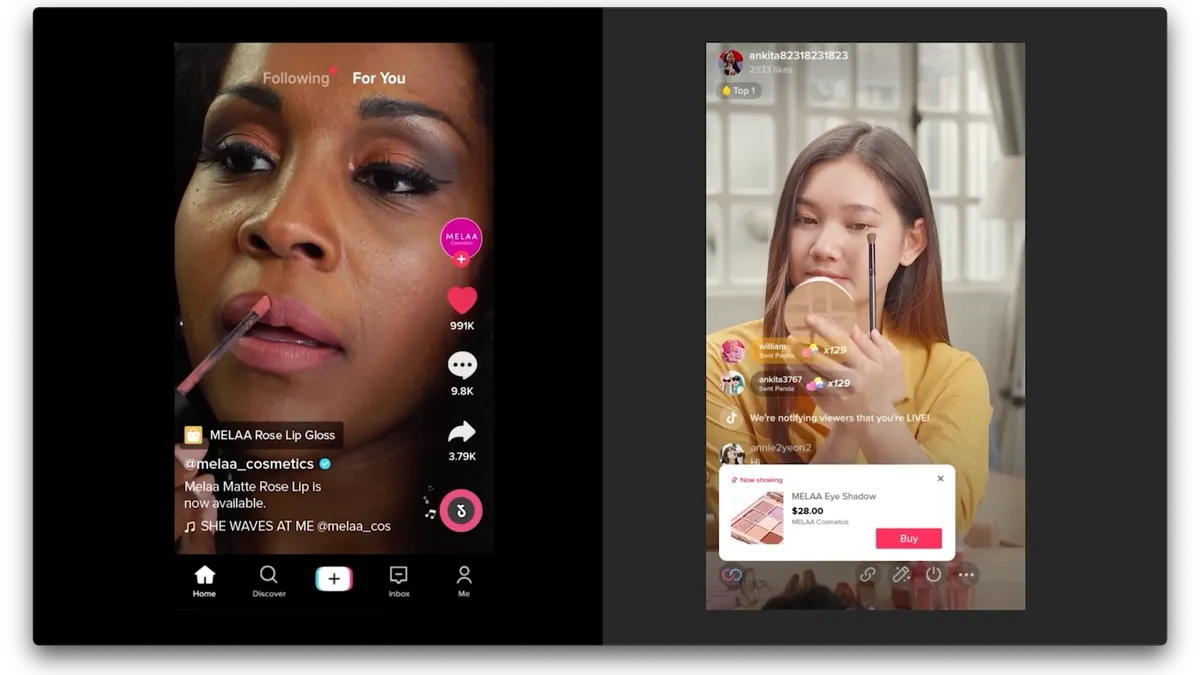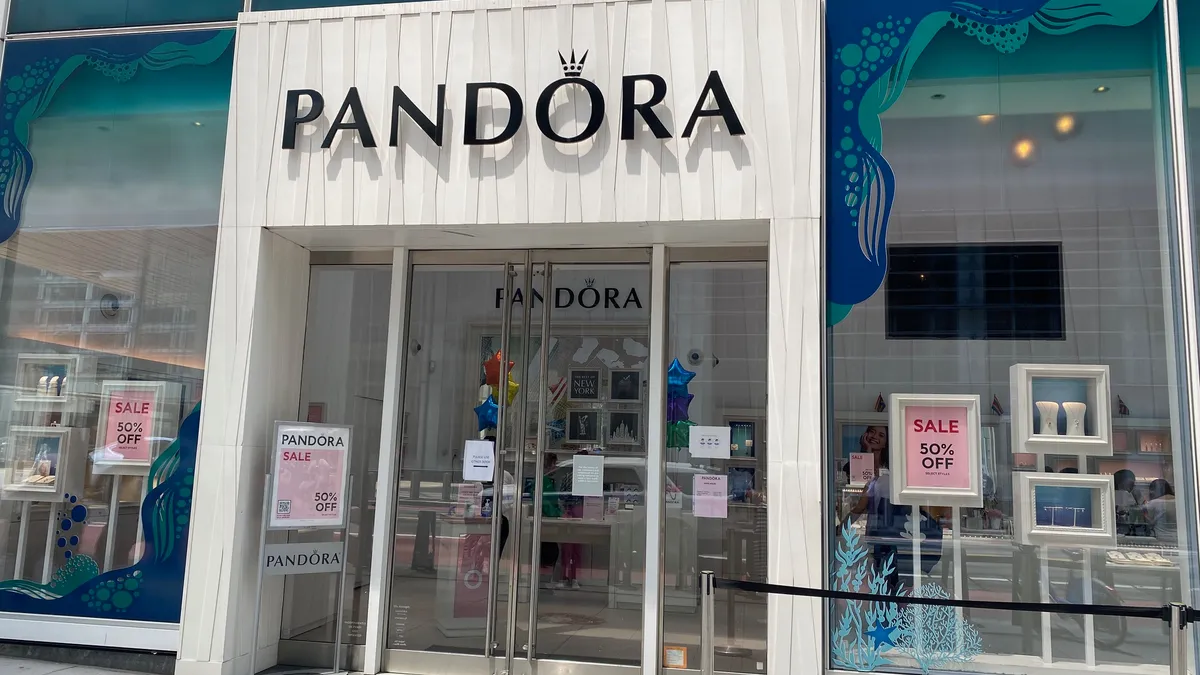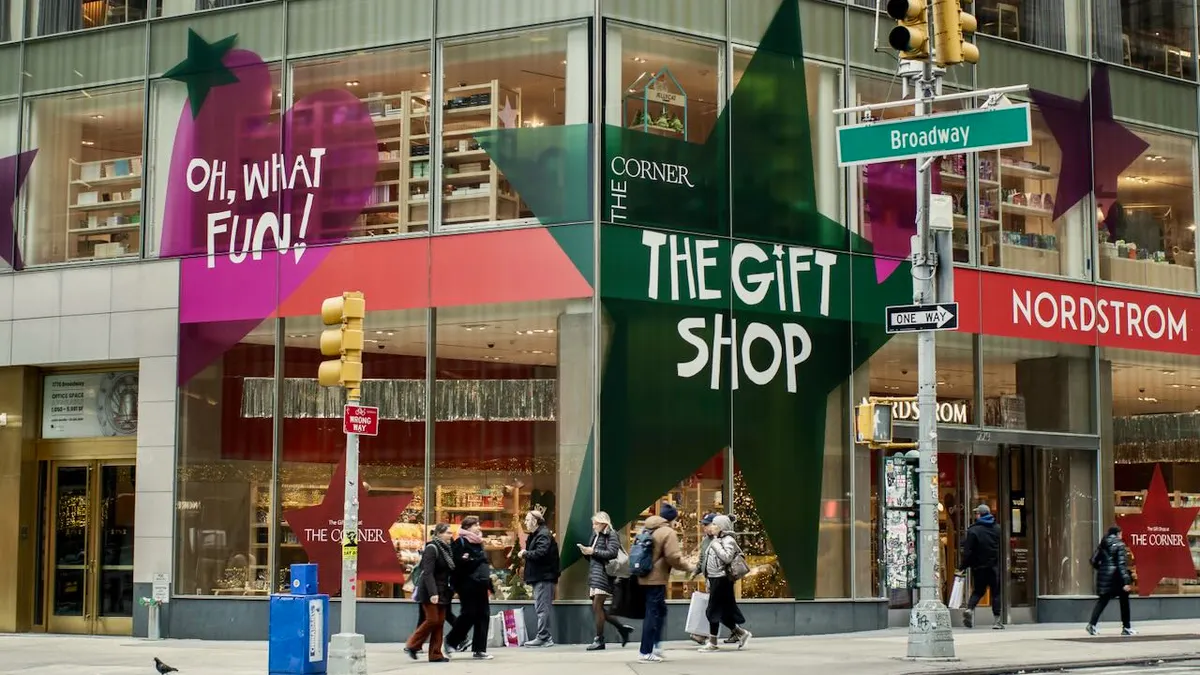For a retailer that dominated one of the biggest shifts in the activewear market in recent memory, Lululemon owned up to a hard truth this fall: it’s been missing trends.
“We have become too predictable within our casual offerings,” CEO Calvin McDonald said in September, on the same earnings call where Lululemon reported its latest in a string of comparable sales declines in North America.
The executive also acknowledged that Lululemon’s seasonal colors aren’t performing as expected. That’s a problem Lululemon vowed to address more than a year ago, at the same time that it said the athletics brand wasn’t stocked in the right sizes.
“This doesn't happen overnight,” Liza Amlani, principal at Retail Strategy Group, said in an interview, noting that it takes at least a year to go from concept to market with a product. “The assortment has been predictable for some time now and the reality is that brands like Alo and Vuori have become the bugaboo and are gaining momentum themselves.”
McDonald acknowledged the increased competition in the space, but also blamed some of Lululemon’s struggles on declines in the premium athleticwear market in the U.S. Sharon Zackfia, a research analyst at William Blair, agreed that the premium side of the market has “not been great” recently and the fact that Lululemon is gaining share even with its lower results is telling.
But how much can Lululemon’s problems be blamed on itself and how much can be blamed on the category?
High-priced activewear is still in, but the bar is higher
According to data from Circana, year-to-date activewear dollar sales in the U.S. are up 3% year over year and units sold in the category have grown 7% in that time. That compares to the rest of the U.S. apparel market, which is down 4%.
Worldwide, Euromonitor data shows sportswear has grown every year since 2020 and is projected to increase again — by almost 5% — in 2025. That category includes performance apparel, outdoor apparel and sports-inspired apparel, which have each also grown individually every year.
Neither of those datasets breaks out the premium activewear market, but they show that the broader sector is still firmly in growth mode.
“I think this is definitely a Lululemon problem,” Amlani said. She added that the brand has fallen into a “classic trap” of large companies. “They fall in love with their existing franchises of product and then they over-rely on them to drive results across the business and across regions, especially the U.S., where there is a lot more choice.”
Others are not so sure. Jessica Ramírez, co-founder and managing director of The Consumer Collective, noted that consumers are heading back into offices more, which has sent their apparel dollars elsewhere. Suzy Davidkhanian, who leads the retail desk at Emarketer, said it’s likely both, but that Lululemon is definitely “resting on its laurels” lately.
“The looks are a little bit dated,” Davidkhanian said. “It feels a little bit more replenishment-y, and athleisure was at its core about fashion, right?”
With leggings that regularly land around the $100 mark, Lululemon is hardly a cheap buy — and in a time of prolonged inflation and price sensitivity, shoppers need a good reason to shell out that kind of money.
“There is a very crucial point where you do need to have newness because the consumer needs to justify why they're going to purchase something out of a discretionary category,” Ramírez said.
“It's hard when you see something selling really well to not keep going in that direction.”

Suzy Davidkhanian
Analyst at Emarketer
That might explain why Lululemon’s performance offerings are posting better results than its social and lounge categories. Those lines, which include more loungewear and commuter-style options, are a good extension of the brand, but they are also more discretionary. The more activewear retailers get into those fashion-led categories, the more markdowns they must also be willing to take, according to Zackfia.
Perhaps illustrative of the state of the consumer is a lawsuit Lululemon filed against Costco earlier this year, alleging that the warehouse retailer is creating low-price dupes of its products. It’s unlikely Lululemon would have taken action if the brand didn’t think Costco was doing something well, Davidkhanian noted. And it’s not just Costco; private labels more broadly present a challenge to expensive brands like Lululemon and put an even higher premium on newness.
Shoppers aren’t likely to abandon high-priced activewear altogether, experts said, but what brands do need to worry about is having a compelling assortment and adjusting to trends.
Ramírez, for example, noted that many barre- and pilates-goers are now venturing out from skin-tight leggings to more wide-leg and loose options. Sports like pickleball, tennis and golf also require different staple products, namely shorts, skirts and dresses, which, according to Ramírez, Lululemon didn’t capitalize on.
Davidkhanian, too, believes Lululemon has struggled to follow trends and keep up with demand for viral products.
“It's hard when you see something selling really well to not keep going in that direction,” Davidkhanian said, noting that colors like black, gray and white are consistent best-sellers for brands. “But if that happens, then you'll never see Barbie pink popping — or anything else.”
The good, the bad and the ugly leggings
Where does Lululemon go from here? And how does the brand recapture the attention of activewear shoppers?
Lululemon has its own answer to those questions. McDonald outlined a plan in early September to rethink the activewear brand’s design and product development processes. He also highlighted that Global Creative Director Jonathan Cheung, who arrived last year, has been building out a team of designers with a fresh perspective on Lululemon.
“My view now is that we have relied on the same product playbook across certain categories for too long,” McDonald said, specifically citing its more casual social and lounge offerings.
As a result, the brand plans to grow new styles to 35% of its overall assortment by next spring, up from 23% now. Lululemon will likely need to iterate further once that new product hits stores, Zackfia said, and how fast they can do so will determine the brand’s turnaround success.
Taking a hard look at product design, development and innovation should help, especially with chasing trending product. Lululemon also hired a chief AI and technology officer, who started earlier this month, which Davidkhanian said could give the brand a boost when it comes to predicting demand.
“The last thing you want to be told is that your assortment is boring and that your competitors are ripping you off."

Liza Amlani
Principal at Retail Strategy Group
Some analysts are skeptical whether Lululemon’s dedication to newness really solves the problem, though.
Jefferies analysts in several instances this summer noted signs that Lululemon’s “core is cracking.” The firm flagged “alarming” markdowns at Lululemon stores in July and criticized its attempts to spread beyond its yoga-based roots.
“The shift to louder styles aimed at younger shoppers has led to rapidly increasing sales activity and echoes [Gap and Under Armour’s] past missteps,” the analysts wrote. “[Management] is zeroing in on ‘newness’ as a panacea for their product struggles and has emphasized the need for more colors and designs, however the outcome is a disjointed assortment that's failing to convert.”
Jefferies lambasted the retailer for selling logo-heavy products aimed at young shoppers, saying they were likely to alienate Lululemon’s customer base, and in early August released a note revealing those products were showing up on sales racks. Lululemon did not immediately respond to a request for comment, though McDonald acknowledged on the brand’s recent call that some of its best customers are pulling back on spending in core categories.
Amlani sees value in the logo, collegiate-type products, as that style is trending among young shoppers right now, but everyone Retail Dive spoke to highlighted the need for better innovation. Specifically, Ramírez said Lululemon has been slow to react to the slowdown in leggings and what shoppers need from their performancewear right now.
Brand followers on Reddit have also complained about discontinued lines, lower quality products and a bent away from performancewear over the years. That last is a double-edged sword, though, as some — like Under Armour — have stymied their own growth by sticking too close to performance products.
While Lululemon’s material innovation is top class, the brand is getting beat by competitors on design and functionality, Amlani said, and needs to keep innovation lanes open even as it executes on seasonless collections.
“Lululemon doesn't have that point of difference that it used to have,” Amlani said. “The last thing you want to be told is that your assortment is boring and that your competitors are ripping you off, right? So I think it's really important for Lululemon to continue to innovate.”
How long will Lululemon be in downward dog?
The question is whether innovation is enough. Lululemon’s core black leggings began showing up in outlets this summer, according to Jefferies, a development that signals a "fundamental breakdown” in the brand’s inventory management and brand positioning.
“I think part of what Wall Street is struggling with right now is trying to understand: Is it competition? Is it newness? Is it shifting consumer tastes? And I think that's really the big question,” William Blair’s Zackfia said, noting that we may know more when Lululemon drops new styles next year. “In the interim, there's just a lot of questions around what's causing that weakness.”
Several growth areas for Lululemon are also under pressure. A “high volume” of men’s basic bottoms and polos were on sale this summer, Jefferies noted, a category that is a key pillar of Lululemon’s growth plan. Lululemon is banking on its men’s business to double and its international segment to quadruple by 2026.
While international numbers remained strong in the latest quarter, HSBC analysts in September flagged “relatively cautious commentary” on key markets like Canada and China, which implies “the brand is now globally vulnerable. We believe an eventual slowdown in international markets could be another leg down.”
HSBC also downgraded Lululemon, saying it was “in a downward spiral” and likely to face an uphill battle regaining relevance in the U.S. According to HSBC, that’s due to the “belated acknowledgment of underlying product issues and increased competitive pressures,” which have already come a year after Lululemon’s initial attempts to right the ship.
“As a result, we no longer give [Lululemon] the benefit of the doubt,” HSBC analysts wrote, adding that foot and web traffic are both losing steam as core customers tune out the brand.
“Lululemon has been the go-to in performance-driven apparel but there are better fashion-forward alternatives out there, in our opinion,” the analysts said. “Given casual is 40% of the product mix, we think it will be challenging to scale from here.”
On the other hand, the upcoming Gen Alpha generation loves Lululemon and is already sporting the brand, according to Ramírez. Lululemon also has strong marketing, led by a solid brand ambassador and rewards program — and it maintains a leading place in customers’ minds.
This may simply be a speedbump, perhaps exacerbated by the loss of Chief Product Officer Sun Choe last year, who left to lead Vans’ turnaround. Choe held a lot of responsibilities around product design, innovation and merchandising, and she was “very significant” at Lululemon, according to Ramírez.
“I feel like what they've outlined is the right plan,” Ramírez said. “What I'm now starting to have questions on is if the right team is in place.”





